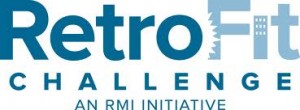 |
| Reviews and Templates for Expression We |
Set Realistic Timelines for Energy Goals, Says Rocky Mountain Institute

A blog posting at RMI identifies two lessons learned so far: it’s best to think about retrofitting as part of a business’ overall strategy rather than on a project-by-project basis; and it’s valuable to set reasonable time limits on energy goals.
Thus far, RMI has worked directly with the Army and Air Force Exchange Service, AT&T, and Kaiser Permanente on the RetroFit Challenge. It also has built a network of energy managers and practitioners at these and many other organizations from which it has gleaned lessons.
Companies tend to use either a “bolt-on” or “embedded” approach to energy retrofitting, according to RMI’s blog. In a bolt-on sustainability approach, energy retrofits are completed in a relatively ad-hoc manner when opportunities – identified somewhat haphazardly and generally without full knowledge of the art of the possible – have a good simple payback. This approach yields marginal energy savings that at times barely outweigh the hassle of finding the opportunities.
A more effective approach is to embed energy retrofits into the enterprise strategy. This means being clear why energy savings is important to the enterprise and how energy-saving activities tie to other value drivers, as well as ensuring real energy results at the end of the day. A clear and definite strategy around energy savings gets all players working together with a shared strategic intent.
A particular hang-up that some portfolio partners have experienced is around setting an energy-savings target. Some set very conservative and short-term goals to ensure success. Others have set audacious long-term goals and have since felt uneasy about being able to achieve them. A good target-setting exercise can both push the enterprise out of its comfort zone and alleviate most achievement headaches.
RMI’s approach, tested now with several clients at the campus level as well as the portfolio energy level, has been to set targets by first considering the technical potential in each building in the portfolio. The technical potential is the energy savings and building betterment that could be achieved in the portfolio using off-the-shelf technology and standard design, with no regard to capital cost and financial return. This approach allows a comparison between an actual building to the best theoretical version of itself, carefully considering opportunities that would not otherwise be considered.
Then RMI recommends considering the capital costs and value of achieving the technical potential. During this process, energy managers should estimate not just the energy cost savings value, but other values such as potential health cost savings (e.g. from a naturally ventilated building), better employee recruitment and retention (e.g. through better daylighting and views to the outside), or increased sales (e.g. through improved public image).
Organizations can identify the technical and achievable potentials for an entire portfolio of buildings at a fairly high level, using just basic information about the buildings, if they have an accurate set of data. According to RMI, in most cases this high-level exercise is effective for setting an energy savings target that is based on real analysis, and which strikes at the desirable nexus of being both achievable and ambitious.
|
|
|
|
Copyright 2011 Energy and Technical Services Ltd. All Rights Reserved. Energyts.com |